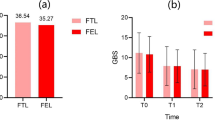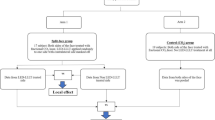Abstract
Non-ablative and ablative fractional erbium lasers are among the most frequently used resources in dermatology for facial rejuvenation and for treating dermatological disorders. This type of erbium laser can be found at wavelengths of 1540 or 1550 nm, which are classified as non-ablative erbium glass, and at 2940 nm, classified as ablative erbium YAG. Despite the reports of their clinical benefits, few scientific studies have demonstrated the efficacy and safety of these lasers in the short or long term. In order to substantiate the effects, benefits, and safety of applying the erbium glass and erbium YAG lasers, a systematic review was carried out from August to December 2019 about studies published in the last 20 years. Randomized clinical trials in humans were considered that evaluated the efficacy, safety, and benefits of applying the fractional lasers erbium glass and erbium YAG to facial rejuvenation, skin spots, and atrophic acne scars. A total of 338 articles were identified; 76 articles remained after their titles and abstracts were read, and 42 articles were selected after removing the duplicates. After the articles were read in full, 17 of these articles were included in the systematic review (453 patients). The erbium glass and erbium YAG lasers seem promising in the short term, with minimal adverse effects; however, the long-term efficacy and safety still present limitations. Consequently, future research is needed, with better methodological standardization and a follow-up with a longer evaluation period for possible permanent adverse effects to determine the standardization and safety of therapy with erbium glass and erbium YAG lasers.



Similar content being viewed by others
References
Khatri KA, Ross V, Grevelink JM, Magro CM, Anderson RR (1999) Comparison of erbium: YAG and carbon dioxide lasers in resurfacing of facial rhytides. Arch Dermatol 135(4):391–397
Chen KH, Tam KW, Chen IF, Huang SK, Tzeng PC, Wang HJ, Chen CC (2017) A systematic review of comparative studies of CO2 and erbium:YAG lasers in resurfacing facial rhytides (wrinkles). J Cosmet Laser Ther. 19(4):199–204
De Filippis A, Perfetto B, Guerrera LP, Oliviero G, Baroni A (2018) Q-switched 1064 nm Nd-YAG nanosecond laser effects on skin barrier function and on molecular rejuvenation markers in keratinocyte-fibroblasts interaction. Lasers Med Sci. 34(3):595–605
Junior AMR, Andrade LCF, Oliveira RG, Aarestrup FM, Farias RE (2006) (2006) Modulação da proliferação fibroblástica e da resposta inflamatória pela terapia a laser de baixa intensidade no processo de reparo tecidual. An Bras Dermatol. 81(2):150–156
Barros FC, Antunes SA, Figueredo CMS, Fischer RG (2008) Laser de baixa intensidade na cicatrização periodontal. R Ci Med Biol 7:85–89
Silva EM, Gomes SP, Ulbrich LM, Giovanini AF (2007) Avaliação histológica da laserterapia de baixa intensidade na cicatrização de tecidos epitelial, conjuntivo e ósseo: estudo experimental em ratos. Rev Sul-Bras Odontol. 4:29–35
Narurkar VA (2007) Nonablative fractional treatment in the male patient. Dermatol Ther 20(6):430–435
Levy JL, Besson R, Mordon S (2002) Determination of optimal parameters for nonablative remodeling with a 1,54 micron Er: glass laser: a dose response study. Dermatol Surg 28(5):405–409
Mattos RA, Valente NYS, Senise M, Campos VB (2009) Laser de Erbium 2940 nm fracionado com pulso duplo, para o fotorrejuvenescimento: estudo clínico e histopatológico dos efeitos no tecido cutâneo. Surg Cosmet Dermatol 1(4):163–167
Sink RK, Hantahs BM, Herrom GS, Rhaman Z, Struck SK, Zachary CB (2007) The effect of pulse energy variations on the dimensions of microscopic thermal treatment zones in nonablative fractional resurfacing. Lasers Surg Med 39(2):145–155
Goldberg DJ (2005) Laser dermatology. Springr-Verlag, Berlin Heidelberg, p 43
Kim HJ, Kim TG, Kwon YS, Park JM, Lee JH (2009) Comparison of a 1,550 nm erbium:glass fractional laser and a chemical reconstruction of skin scars (CROSS) method in the treatment of acne scars: a simultaneous split-face trial. Lasers Surg Med 41:545–549
Downs SH, Black N (1988) The feasibility of creating a checklist for the assessment of the methodological quality both of randomised and non-randomised studies of health care interventions. J Epidemiol Commun Health London 52(6):377–384
Robati RM, Asadi E (2017) Efficacy and safety of fractional CO2 laser versus fractional Er:YAG laser in the treatment of facial skin wrinkles. Lasers Med Sci 32:238–289
Robati RM, Asadi E, Shafiee A, NamaziN TA (2017) Efficacy of long pulse Nd:YAG lasers versus fractional Er:YAG laser in the treatment of hand wrinkles. Lasers Med. 33(3):461–467
Moon HR, Yun WJ, Lee YJ, Lee MW, Chang SE (2015) A prospective, randomized, double-blind comparison of an ablative fractional 2940-nm erbium-doped yttrium aluminum garnet laser with a nonablative fractional 1550-nm erbium-doped glass laser for the treatment of photoaged Asian skin. J Dermatol Treat 26(6):551–557
Karsai S, Czarnecka A, Junger M, Raulin C (2010) Ablative fractional lasers CO2 and Er:YAG: a randomized controlled double-blind split face trial of the treatment of peri-orbital rhytides. Lasers Surg Med 42:160–167
Osman MAR, Shokeir HA, Fawzy MM (2017) Fractional erbium-doped yttrium aluminum garnet laser versus microneedling in treatment of atrophic acne scars: a randomized split-face clinical study. Dermatol Surg 43:S47–S56
Mahmoud BH, Srivastava D, Janiga JJ, Yang JJ, Lim HW, Ozog DM (2010) Safety and efficacy of erbium-doped yttrium aluminum garnet fractionated laser for treatment of acne scars in type IV to VI skin. Dermatol Surg 36:602–609
Hantash BM, Coninck E, Liu H, Gladstone HB (2008) Split-Face Comparison of the Erbium Micropeel with Intense Pulsed Light. Dermatol Surg 34:763–772
Rongsaard N, Rummaneethorn P (2014) Comparison of a fractional bipolar radiofrequency device and a fractional erbium-doped glass 1,550-nm device for the treatment of atrophic acne scars: a randomized split-face clinical study. Dermatol Surg 40:14–21
Kim JH, Kim TG, Known YS, Park JM, Lee JH (2009) Comparison of a 1,550 nm erbium:glass fractional laser and a chemical reconstruction of skin scars (CROSS) method in the treatment of acne scars: a simultaneous split-face trial. Lasers Surg Med 41:545–549
Reinholz M, Schwaiger H, Heppt MV, Poetschke J, Tietze J, Epple A, Ruzicka T, Kaudewitz P, Gauglitz GG (2015) Comparison of two kinds of lasers in the treatment of acne scars. Facial Plast Surg. 31(5):523–531
Manuskiatti W, Iamphonrat T, Wanitphakdeedecha R, Eimpunth S (2013) Comparison of fractional erbium-doped yttrium aluminum garnet and carbon dioxide lasers in resurfacing of atrophic acne scars in Asians. Dermatol Surg 39:111–120
Jun HJ, Kim SM, Choi WJ, Cho SH, Lee JD, Kim HS (2014) A split-face, evaluator-blind randomized study on the early effects of Q-switched Nd:YAG laser versus Er:YAG micropeel in light solar lentigines in Asians. J Cosmet Laser Ther. 16:83–88
Manuskiatti W, Siriphukpong S, Varothai S, Wanitphakdeedecha R, Fitzpatrick R (2010) Effect of pulse width of a variable square pulse (VSP) erbium:YAG laser on the treatment outcome of periorbital wrinkles in Asians. Int J Dermatol 49:200–206
Dainichi T, Kawaguchi A, Ueda S, Tajiri R, Fumimori T, Kakuma T, Hashimoto T (2010) Skin tightening effect using fractional laser treatment: I. A randomized half-side pilot study on faces of patients with acne. Dermatol Surg 36:66–70
Wattanakrai P, Pootongkam S, Rojhirunsakool S (2012) Periorbital rejuvenation with fractional 1,550-nm ytterbium/erbium fiber laser and variable square pulse 2,940-nm erbium:YAG laser in Asians: a comparison study. Dermatol Surg. 38(4):610–622
Hantash BM, Bedi VP, Chan KF, Zachary CB (2007) Ex vivo histological characterization of a novel ablative fractional resurfacing device. Lasers Surg Med 39(87–95):6
Tao L, Wu J, Qian H, Lu Z, Li Y, Wang W, Zhao X, Tu P, Yin R, Xiang L (2015) Intense pulsed light, near infrared pulsed light, and fractional laser combination therapy for skin rejuvenation in Asian subjects: a prospective multi-center study in China. Lasers Med Sci. 30(7):1977–1983
Weber RJ, Taylor BR, Engelman DE (2011) Laser-induced tissue reactions and dermatology. Curr Probl Dermatol 42:24–34
Alster TS, Lupton JR (2001) Erbium:YAG cutaneous laser resurfacing. Dermatol Clin. 19(3):453–466
Welch AJ, Torres JH, Cheong WF (1989) Laser physics and laser-tissue interaction. Tex Heart Inst J. 16(3):141–149
Allemann B, Kaufman J (2010) Fractional photothermolysis–an update. Lasers Med Sci 25(1):137–144
Catorze G (2009) Laser: fundamentos e indicações em dermatologia. Med Cutan Iber Lat Am. 37(1):5–27
Trelles MA, Mordon S, Velez M, Urdiales F, Levy JL (2009) Results of fractional ablative facial skin resurfacing with the erbium:yttrium-aluminium-garnet laser 1 week and 2 months after one single treatment in 30 patients. Lasers Med Sci 24:186–194
Shah S, Alster TS (2010 Dec 1) (2010) Laser treatment of dark skin: an updated review. Am J Clin Dermatol. 11(6):389–397
Choe YB, Jang SJ, Jo SJ, Ahn KJ, Youn JI (2006) The difference between the constitutive and facultative skin color does not reflect skin phototype in Asian skin. Skin Res Technol 12:68–72
Costa FB, El Ammar ABP, Campos VB, Kalil CLPV (2011) Complicações com o uso de lasers. Parte II: laser ablativo fracionado e não fracionado e laser não ablativo fracionado. Surg Cosmet Dermatol. 3(2):135–146
(2009) Laser: fundamentos e indicações em dermatologia. Med Cutan Iber Lat Am 37(1):5–27
You HJ, Kim DW, Yoon ES, Park SH (2016) Comparison of four different lasers for acne scars: resurfacing and fractional lasers. J Plast Reconstr Aesthet Surg. 69(4):e87–e95
Ross EV, Miller C, Meehan K, Pac MKJ, Sajben P, Trafeli JP, Barnette DJ (2001) One-pass CO2 versus multiple-pass Er:YAG laser resurfacing in the treatment of rhytides: a comparison side-by-side study of pulsed CO2 and Er:YAG lasers. Dermatol Surg. 27(8):709–715
Agamia NF, Sorror O, Alrashidy M, Tawfik AA, Badawi A (2020) Clinical and histopathological comparison of microneedling combined with platelets rich plasma versus fractional erbium-doped yttrium aluminum garnet (Er: YAG) laser 2940 nm in treatment of atrophic post traumatic scar: a randomized controlled study. J Dermatolog Treat. 2:1–8
Author information
Authors and Affiliations
Contributions
Débora A. Oliveira Modena, MSc, searched for articles in databases, analyzed articles, and wrote the manuscript. Ana Carolina Godoy Miranda, PhD, searched for articles in databases, analyzed articles, and contributed to the manuscript’s writing. Clovis Grecco, PhD, revised and contributed to writing the manuscript. Richard Eloin Liebano, PhD, revised and contributed to writing the manuscript. Raquel Cristina Tancsik Cordeiro, PhD, revised and contributed to writing the manuscript. Renata Michelini Guidi revised and contributed to writing the manuscript.
Corresponding author
Ethics declarations
Conflict of interest
The authors declare that they have no conflicts of interest.
Ethical approval
The research was not submitted to an ethics committee, as it was a review study.
Additional information
Publisher’s note
Springer Nature remains neutral with regard to jurisdictional claims in published maps and institutional affiliations.
Rights and permissions
About this article
Cite this article
Modena, D.A.O., Miranda, A.C.G., Grecco, C. et al. Efficacy, safety, and guidelines of application of the fractional ablative laser erbium YAG 2940 nm and non-ablative laser erbium glass in rejuvenation, skin spots, and acne in different skin phototypes: a systematic review. Lasers Med Sci 35, 1877–1888 (2020). https://doi.org/10.1007/s10103-020-03046-7
Received:
Accepted:
Published:
Issue Date:
DOI: https://doi.org/10.1007/s10103-020-03046-7




